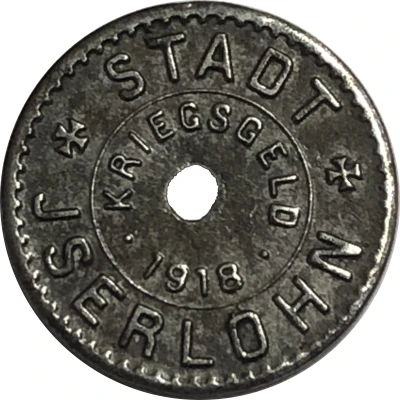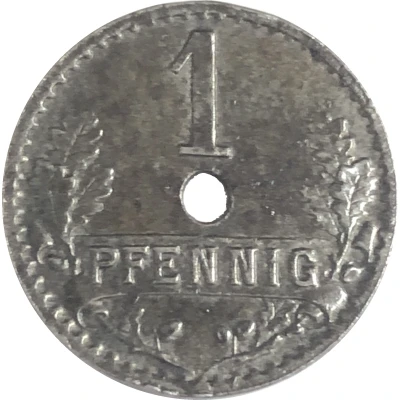


© Michel K. Monteiro
1 Pfennig - Iserlohn
1918 year| Iron | 1.3 g | 15.7 mm |
| Issuer | City of Iserlohn (Prussian province of Westphalia) |
|---|---|
| Type | Standard circulation coin |
| Year | 1918 |
| Value | 1 Pfennig (0.01) |
| Currency | Mark (1914-1924) |
| Composition | Iron |
| Weight | 1.3 g |
| Diameter | 15.7 mm |
| Thickness | 1.0 mm |
| Shape | Round with a round hole |
| Technique | Milled |
| Orientation | Medal alignment ↑↑ |
| Demonetized | Yes |
| Updated | 2024-10-04 |
| Numista | N#290476 |
|---|---|
| Rarity index | 83% |
Reverse
Pearl rim, denomination flanked by oak leaves
Script: Latin
Lettering:
1
PFENNIG
Edge
Plain
Interesting fact
The 1 Pfennig - Iserlohn 1918 coin was issued during a time of economic turmoil in Germany, known as the "Inflationary Period" (1914-1923). During this time, the value of the German mark (the national currency) plummeted, and prices for everyday goods skyrocketed. As a result, many Germans turned to alternative forms of currency, such as local emergency currencies like the 1 Pfennig - Iserlohn 1918 coin, which was issued by the City of Iserlohn in 1918. This coin is particularly interesting because it was made of iron, which was a common material used for coinage during this time period due to its durability and affordability. Additionally, the coin's design features the image of a crowned eagle, which was a symbol of the Prussian province of Westphalia, where the City of Iserlohn was located. Overall, the 1 Pfennig - Iserlohn 1918 coin is a unique and fascinating piece of history that highlights the economic challenges faced by Germany during the early 20th century.